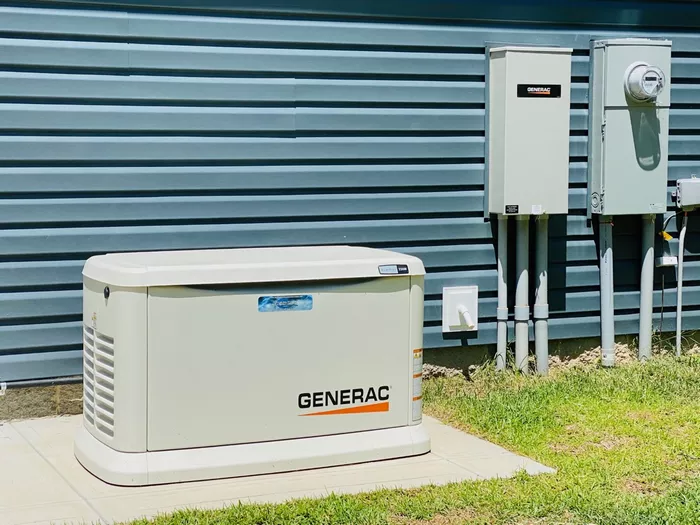When it comes to backup power solutions, a 20kW generator is a versatile and powerful choice that can support a wide range of applications. Understanding its capabilities helps homeowners, businesses, and emergency planners make informed decisions. In this article, we explore in detail what a 20kW generator can run, considering residential, commercial, and industrial applications.
Understanding the Capacity of a 20kW Generator
Before delving into what specific appliances and systems a 20kW generator can power, it’s important to understand what “20kW” means. A 20kW (kilowatt) generator can produce up to 20,000 watts of electrical power. This level of power is typically sufficient for medium to large homes and certain business operations during power outages.
Key Points
- 1 kilowatt equals 1,000 watts.
- 20kW is enough to power a range of essential and non-essential systems simultaneously.
- The generator’s capacity must be matched to the total wattage of the items it supports.
Powering Essential Household Appliances
A 20kW generator can run all the essential household appliances required for daily living during a power outage. Here’s a breakdown of some key appliances it can support:
HVAC Systems
One of the major benefits of a 20kW generator is its ability to power HVAC systems. Central air conditioning units, which can require between 3,000 to 5,000 watts (for typical residential units), are within the scope of this generator. In colder climates, a furnace or heat pump can be equally demanding but well-supported by this capacity.
Refrigerators and Freezers
Keeping perishables safe is crucial during an outage. Most standard refrigerators use between 500 to 800 watts, meaning a 20kW generator can easily handle one or more refrigerators and freezers simultaneously.
Water Heaters
Electric water heaters can draw anywhere from 3,000 to 4,500 watts, and a 20kW generator can manage this load alongside other appliances. This ensures that hot water remains available during an outage.
Lighting and Basic Electronics
Lighting in a typical home can vary in power usage, but LED and energy-efficient bulbs use between 10 to 20 watts each. Additionally, TVs, computers, routers, and other small electronics generally draw minimal power (under 500 watts combined).
Kitchen Appliances
A 20kW generator can power major kitchen appliances like microwaves (1,000 to 1,500 watts), dishwashers (1,200 to 2,400 watts), and even an electric stove (up to 2,000 watts per element) without issue.
Running a Home Office or Small Business
For individuals who work from home or operate small businesses, a 20kW generator is a reliable choice for maintaining productivity during outages.
Computers and Network Equipment
A standard desktop computer uses approximately 150-300 watts, while a high-performance model may consume more. Network equipment (routers, modems) typically uses under 100 watts. A 20kW generator can handle multiple workstations, printers, and essential networking devices.
Office Lighting and HVAC
Keeping a home office comfortable and well-lit requires a steady supply of electricity. With a 20kW generator, running HVAC systems and office lighting alongside computers and other devices is feasible without overloading.
Backup Power for Medical Equipment
For households that rely on medical equipment, uninterrupted power is crucial. Devices such as oxygen concentrators (300-600 watts), CPAP machines (30-60 watts), and home dialysis machines (up to 1,500 watts) can all be supported by a 20kW generator. The generator’s capacity ensures that these life-saving devices continue to function, providing peace of mind during extended power outages.
Powering Commercial Spaces
A 20kW generator isn’t limited to residential use; it can be a valuable asset for small to medium-sized commercial spaces.
Retail Stores: Small retail stores with refrigeration units, cash registers, lighting, and point-of-sale systems can rely on a 20kW generator to keep their operations running smoothly during an outage.
Small Offices: A small office setup with multiple computers, servers, telephones, and essential lighting can be comfortably supported. The generator ensures continued business operations without major interruptions.
Industrial Applications and Workshop Use
While a 20kW generator may not be sufficient for heavy industrial machinery, it is still useful for workshops and construction sites with moderate power needs.
Power Tools: Tools such as drills, saws, and compressors, which typically range from 1,000 to 3,000 watts each, can be powered without issue. A 20kW generator can support several tools running simultaneously, making it an excellent choice for small-scale projects.
Lighting and Safety Systems: Construction sites often require portable lighting and safety systems. A 20kW generator can support high-intensity lights, electronic signs, and basic security measures.
Estimating Total Load Requirements
When planning to use a 20kW generator, it’s essential to estimate your total load requirements. This involves adding up the wattage of all devices you plan to run concurrently.
Load Management Tips
- Prioritize essential appliances during an outage.
- Use surge protectors to safeguard sensitive electronics.
- Invest in an automatic transfer switch (ATS) for seamless power transition.
Practical Examples of What a 20kW Generator Can Support Simultaneously
To illustrate, here’s an example of a combined load a 20kW generator could handle:
- Central air conditioning unit: 4,000 watts
- Refrigerator and freezer: 1,200 watts
- Electric water heater: 4,000 watts
- LED lighting (entire house): 400 watts
- Two desktop computers: 600 watts
- Home entertainment system: 400 watts
- Miscellaneous small appliances: 1,000 watts
Total Load: Approximately 11,600 watts
This example demonstrates that even with multiple significant appliances running, a 20kW generator still has a buffer for additional devices.
Conclusion
A 20kW generator is a robust solution for providing backup power to medium to large households, home offices, small businesses, and workshops. Its ability to support essential and non-essential loads simultaneously makes it versatile and valuable during power outages. Proper planning, load management, and understanding the generator’s capabilities ensure that users can maximize its efficiency and keep operations running smoothly.
Related topics:

